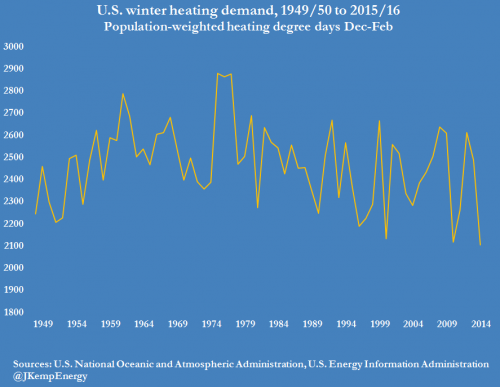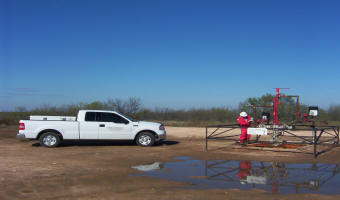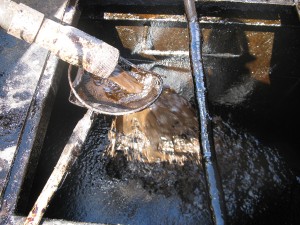Colder 2016-17 winter will boost US heating oil and natural gas demand: Kemp
 National Weather Service is predicting coldest temps in Midwest, Northeast which rely most on heating oil and natural gas
National Weather Service is predicting coldest temps in Midwest, Northeast which rely most on heating oil and natural gas
By John Kemp
LONDON (Reuters) – The U.S. summer driving season ends with Labor Day on Sep 5, and the attention of the energy markets is already switching to the forthcoming winter heating season.
The winter of 2015/16 was the warmest on record, which sharply reduced consumption of both natural gas and heating oil.
Average winter temperatures are very variable, but the winter of 2016/17 will almost certainly be colder, which should lead to a significant increase in gas and heating oil demand.
Between December 2015 and February 2016, there were just 2,105 population-weighted heating degree days, a common measure of heating demand, compared with an average of 2,433 over the previous decade.
Last winter was even milder than previous record-setting winters in 2011/12 and 2001/02, according to the National Oceanic and Atmospheric Administration (NOAA).
Warm weather helped cut natural gas consumption by more than 4 percent compared with the winter of 2014/15.
Consumption of distillate fuel oil, which includes heating oil, fell more than 9 percent, according to the U.S. Energy Information Administration.
By March 2016, the warm weather left gas stocks at a record high level for the time of year and distillate fuel oil stocks at the highest seasonal level for at least 35 years.
WINTER IS COMING
Next winter is likely to be colder, increasing heating demand, though there is still considerable uncertainty about just how much colder it will be.
The Climate Prediction Center of the National Weather Service is currently forecasting a warmer than normal winter (Dec-Feb) across much of the southern and western United States.
But temperatures are expected to be near-normal across the Midwest and Northeast and below normal in Wisconsin, the Dakotas and Montana.
The forecast is based on the expected development of weak La Nina conditions in the central Pacific over the next three months (“Prognostic discussion for long-lead seasonal outlooks”, NWS, Aug 18).
The first part of the winter heating season (Oct-Dec) is predicted to be warmer than average across much of the country turning cooler than usual in the second half of the heating season (Jan-Mar).
Even if winter of 2016/17 remains milder than usual it is still very likely to be colder than winter 2015/16, where temperatures were far above normal in almost every part of the country.
Temperatures during winter 2015/16 were well above average across almost every part of the United States, according to NOAA.
In the coming winter, the National Weather Service is predicting the coldest relative temperatures in the Midwest and the Northeast, where reliance on heating oil and natural gas to heat homes and other buildings is highest.
Of households relying on gas as their main source of heating, 52 percent are located in the Northeast and Midwest, according to the Energy Information Administration.
Of households relying on fuel oil as their main heating source, 90 percent are located in the Northeast and Midwest (“Residential Energy Consumption Survey”, EIA, 2009).
Temperature anomalies in 2015/16 were concentrated in those parts of the country that rely most heavily on gas and heating oil, hitting consumption of those fuels disproportionately hard.
Assuming La Nina conditions develop as expected, the same parts of the country are expected to see the coldest relative weather in 2016/17, which should boost gas and distillate consumption significantly.
(Editing by William Hardy)

Ph: 432-978-5096 Website: www.mapleleafmarketinginc.com









